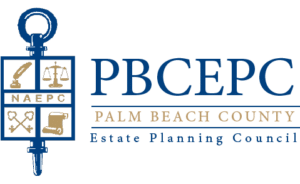
Following a busy holiday season, gift giving may be the last thing on your mind. However, the new year is an opportunity to reevaluate your estate planning strategies, and perhaps offer your family members a piece of the pie—while reducing your tax burden along the way.
Under current federal law, any person can make unlimited gifts to a spouse without the imposition of a federal gift tax. For gifts to non-spouses, the annual exemption is currently $16,000 per person, per year. Gifts exceeding that amount are considered taxable, cutting into the unified gift and estate tax exemption amount. For some, however, a Grantor Retained Annuity Trust (GRAT) may offer a way around that, by allowing the grantor to remove assets from an estate without using as much of the gift tax exemption.
A GRAT is an estate planning technique that minimizes taxes on large financial gifts to family members. Here’s how it works: A grantor makes a one-time transfer of property into an irrevocable trust, reserving for themselves a fixed annual payment amount for a term, either a certain period or their life expectancy. At the end of the annuity term, payments to the grantor stop, and any property remaining in the trust passes to the beneficiaries (e.g., children) named in the trust document. The property can also remain in the trust for the future benefit of the beneficiaries.
A GRAT is composed of the lead interest (i.e., payments to the grantor) and the remainder interest (i.e. the gift). The Section 7520 rate, updated monthly, is used to discount the value of annuities, life estates, and remainder interests to present value. The lower the Section 7520 rate, the lower the value of the gift transferred to the remainder beneficiaries.
For example, assume a $1 million two-year term GRAT created when the Section 7520 rate is 3.80%. If the grantor structures in such a way as to create no taxable gift at the time of funding, a GRAT that earns 6% annually can pass over $34,000 tax-free to the remainder beneficiaries at the end of the term.
GRATs work best when Section 7520 is lower: so long as the underlying performance of the GRAT is better than the Section 7520 rate, the GRAT will be a success. Even if the GRAT underperforms the Section 7520 rate and isn’t a success, the only real cost to the grantor is the expense of drafting and administering the trust.
Any opinions, projections or recommendations contained herein are subject to change without notice and are not intended as individual investment advice. This material is presented for informational purposes only and should not be construed as individual tax or financial advice. KeyBank does not provide legal advice. KeyBank is Member FDIC. KeyCorp. © 2022. CFMA #2208XX-XXXXXXX
Investment products are: NOT FDIC INSURED* NOT BANK GUARANTEED* MAY LOSE VALUE * NOT A DEPOSIT* NOT INSURED BY ANY STATE OR FEDERAL AGENCY
Daryl Gordon is a Regional Director of Trust at Key Bank. With over 26 years’ experience, she helps clients preserve, protect and plan to pass wealth to family, heirs and causes most important to them. Prior to working in Wealth Management, Daryl served as a private practice estate planning attorney.
